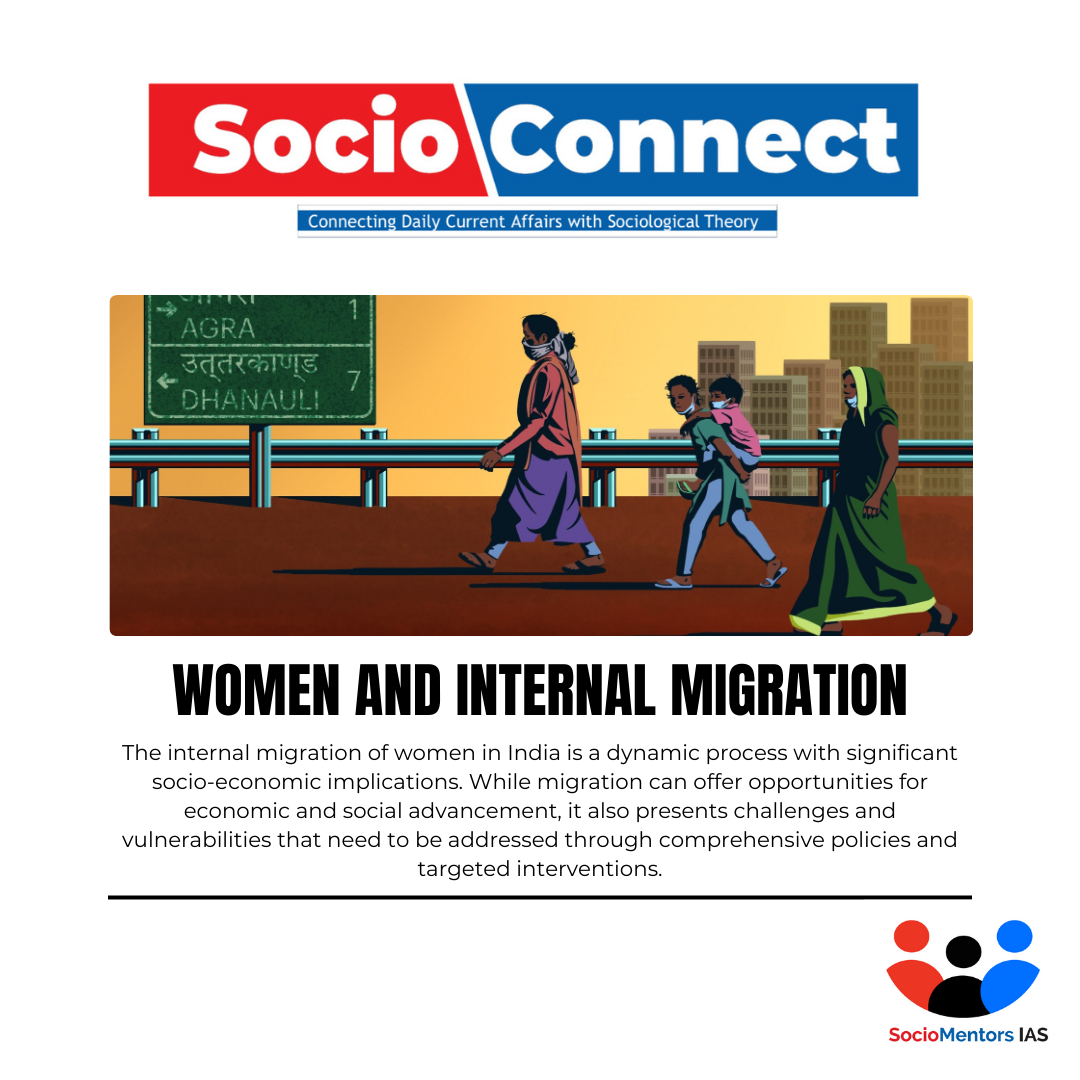Women and Internal Migration in India
July 4, 2024
Sociologist Ravenstein proposes the push-pull theory of migration, suggesting that people migrate due to a combination of factors pushing them away from their origin (push factors) and pulling them towards a destination (pull factors). For women, push factors might include economic disparities, political instability, or gender-based discrimination, while pull factors could be better economic opportunities, family reunification, or improved living conditions.
Challenges of Internal Women Migration
- PLFS data suggest that the leading reason for migration among women is marriage (81%), followed by migration of family members (10%), employment (2.42%), and migration for education opportunities (0.48%). There is no provision to know the secondary reasons/motivations such as climate shocks and food insecurity, which can be a crucial driver of migration for women.
- Migrant Women in Employment: According to the PLFS, approximately three quarters of migrant women are unemployed, approximately 14% of migrant women are in self and wage-employed jobs and approximately 12% are in casual labour. Definitional issues and women’s own beliefs also lead to an underreporting of employment of migrant women.
- Lack of social capital: In the PLFS data, 85% of the women have less than 10 years of education, which can create problems for them in employment and lead to their exploitation. Lack of social networks can limit opportunities for employment. Building human and social capital is crucial for women to access better employment prospects.
- Violence and Harassment: Women migrants are also vulnerable to various forms of violence, including sexual harassment and exploitation during the migration process or in the new community. Lack of legal protection can exacerbate these issues.
Sociological Analysis of Women Migration:
- Patriarchy and Migration: Considering that marriages in India are largely patrilocal, marriage-related migration has traditionally been the single most important reason for migration of women.
- Patriarchal societies often restrict women’s access to education and employment opportunities which result in low paying jobs in informal sector for women after migration.
- According to the definition of employment used by national surveys, only those with some form of verbal or written contract with their employer are considered part of the labour force. Consequently, women are largely classified as unemployed. Sonalde Desai and Ashwini Deshpande suggest that it is not uncommon for migrant women to engage in casual employment, indicating the underestimation of the number of migrant women involved in the various sectors that might be categorised as causal (or even informal) such as agriculture, construction, and domestic help.
- The neoclassical theories of migration assume that wage differentials between the origin determine individual’s migration decisions on the perception of migrant women as secondary movers who move mainly for family reasons (Pedraza, 1991). But they do not consider female-specific push factors, such as gender-based discrimination in the local labor market. Similarly, female specific pull factors, like employment opportunities in the service and care sectors at the destination, are often not accounted for.
- Feminist scholars like Arlie Hochschild have also explored the gendered dimensions of migration. Hochschild’s concept of the “global care chain” highlights how women from less developed countries migrate to wealthier nations to work in caregiving roles, often leaving their own families behind. This has implications for both sending and receiving societies.
Socio-Discourse*
1. How does women’s migration influence the well-being and socialization of their children?
2. How do social support networks, both within the migrant community and in the host society, influence the well-being and integration of women migrants?



